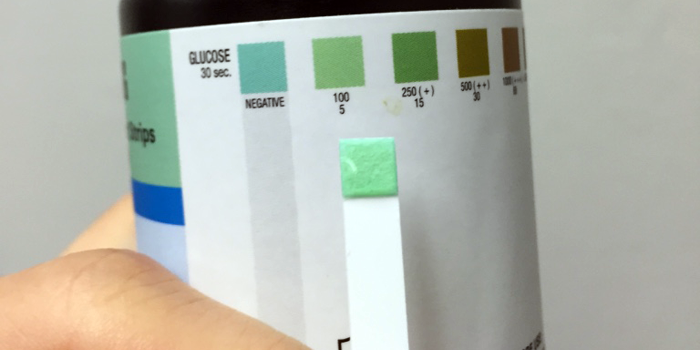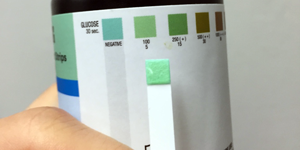Science, Biochemistry, and Sugar
The new Sugar Metabolism Kit from the Science Buddies Store enables students to conduct hands-on science projects related to sugars and the human body.
Enabling Student Science
The human body inspires a great number of questions for students. It can be challenging, however, for students to devise procedures for meaningful experiments related to biochemical processes that do not require human testing or sophisticated laboratory equipment. With scientist-authored procedures that guide students in modeling and simulating biochemical processes, Science Buddies helps bring human biology and biochemistry into the realm of "doable" student science explorations.
The Sugar Metabolism Kit can be used with one of several Science Buddies project ideas related to carbohydrates, digestion, and nutrition. The Sugar Metabolism kit enables students to simulate biochemical processes related to how the body breaks down and uses various kinds of sugar and how the nutritional composition of different foods affects how these foods are used by and impact the body.
Carbohydrates, Glucose, and Blood Glucose
Students interested in diabetes may know that a patient with Type 1 Diabetes typically injects insulin in proportion to the number of carbohydrates eaten. If blood glucose levels are low, however, fast-acting carbohydrates are needed to raise blood glucose levels to a safe range. Too many carbohydrates can cause blood glucose levels to rise too high. Too few carbohydrates may not raise blood glucose enough. And "enough" carbohydrates may not work quickly enough, depending on the nutritional composition. Addressing hyperglycemia (low blood sugar) quickly and effectively is important to keep a person with Type 1 Diabetes safe. While carbohydrates are the key to raising blood glucose, not all carbohydrates are equal when it comes to their impact and speed of impact on blood glucose. What kinds of foods work best to raise blood glucose during hypoglycemia? What difference does the kind of carbohydrates in a food make when eating a regular meal and taking insulin?
People living with diabetes deal with challenge of balancing blood glucose, carbohydrates, and insulin all day long. They may have a preferred treatment for low blood glucose or eat a certain number of carbohydrates when experiencing hyperglycemia, and they may time their insulin differently when eating based on the number of carbohydrates and nutritional content of the food. For example, a "juice box" (often containing 10-15 carbohydrates) is a common choice for treating low blood sugar. Why? (Note: Some people treat low blood glucose with smaller amounts of carbohydrates as the impact of carbohydrates varies per person and depending on the current blood glucose level and whether or not it is still dropping.) A protein bar that contains the same number of carbohydrates, or even a chocolate bar with the same number of carbohydrates, may not work as effectively to treat low blood glucose levels. Why? Similarly, someone with diabetes will often time insulin delivery much differently for a bowl of cereal or a cupcake compared to a slice of pizza or a plate of pasta. Why?
Although people with diabetes deal with these issues surrounding glucose, insulin, carbohydrates, and food choices, the underlying science at the biochemical level can be difficult to grasp. For both students living with Type 1 Diabetes and students curious about glucose and carbohydrates and the science surrounding diabetes, related hands-on chemistry and food science projects can be particularly engaging and informative.
Science Kit Helps Students Explore Biochemistry
With the Sugar Metabolism Kit, students can conduct experiments that help them better understand the composition of foods, why certain foods are better choices at certain times, and how the body breaks down foods for use in the body. The following student science experiments use the Sugar Metabolism Kit:
- How Sweet It Is! Measuring Glucose in Your Food: measure and compare the concentration of glucose in a variety of common fruits and juices.
- Sucrose & Glucose & Fructose, Oh My! Uncovering Hidden Sugar in Your Food: investigate how an enzyme converts sucrose into glucose and how this changes the amount of glucose we digest from different foods.
- Lactose, Sucrose, and Glucose: How Many Sugars are in Your Smoothie?: investigate how digestive enzymes convert sucrose and lactose into glucose and use this information to evaluate the glucose content of your own smoothie recipes.
- I Love Ice Cream, But It Doesn't Love Me: Understanding Lactose Intolerance: explore the biochemical basis for lactose intolerance by adding the enzyme lactase to solutions containing the milk sugar lactose and then testing for one of the reaction products, glucose.
Related Science Projects
For more information and ideas related to Diabetes Science, see our special Diabetes Science Project Ideas collection of projects, news, and career information. See also our 2016 Diabetes Science Projects roundup for National Diabetes Awareness month.
Categories:
You Might Also Enjoy These Related Posts:
- 10+ Robotics Projects with the BlueBot Kit
- 15 STEM Gifts & Science Kits You'll Feel Good About Giving
- 12 Science Kits for Summer Science Experiments and Discovery
- Build a Water Sensor Circuit for the Tree
- Science Project Kits - Our top 10 list!
- Explore Coding and Electronics with Raspberry Pi
- Three new Science Kits for K-12 STEM
- Shoebox STEM: A 4-H Success Story










